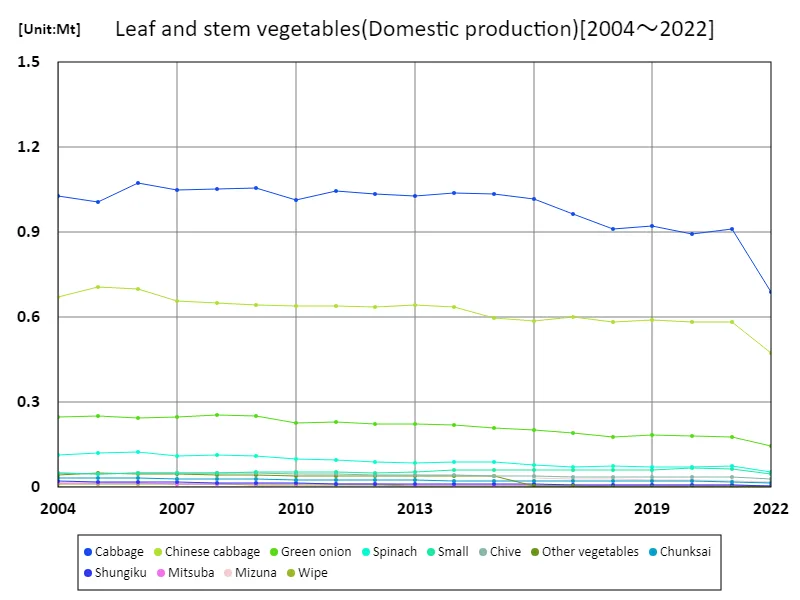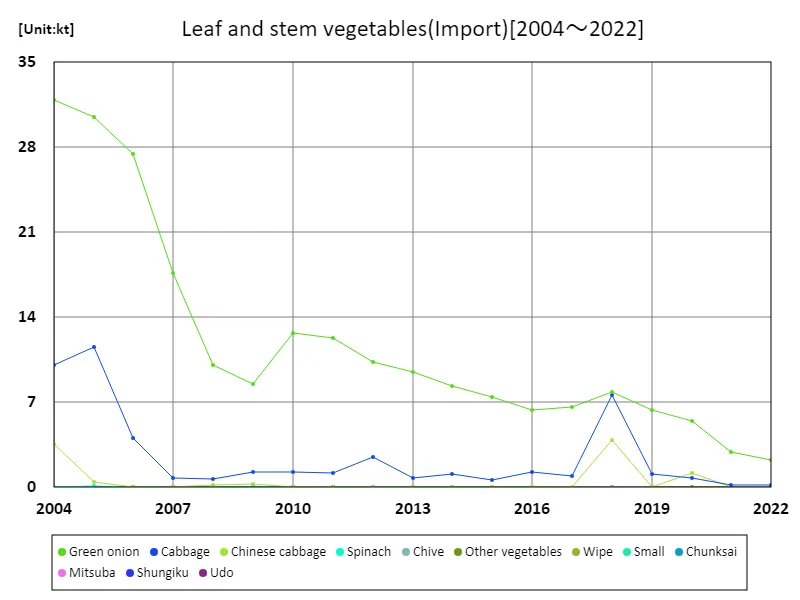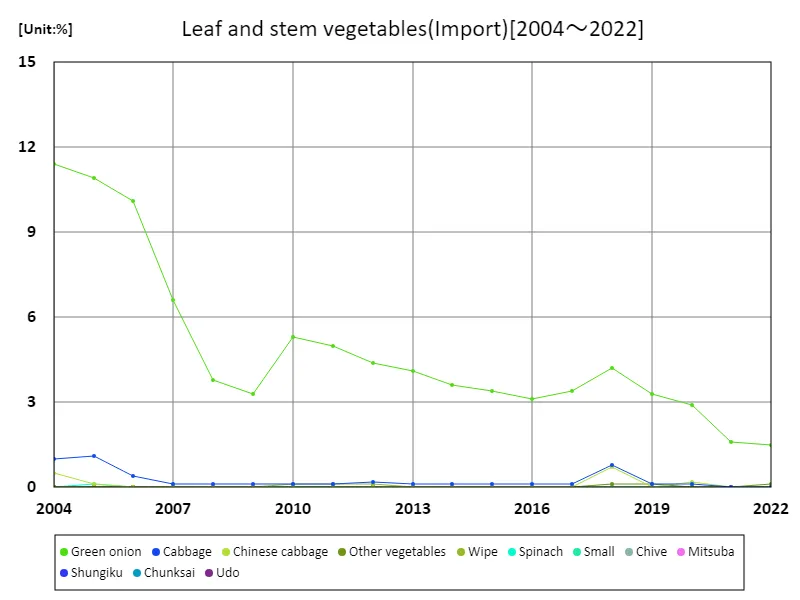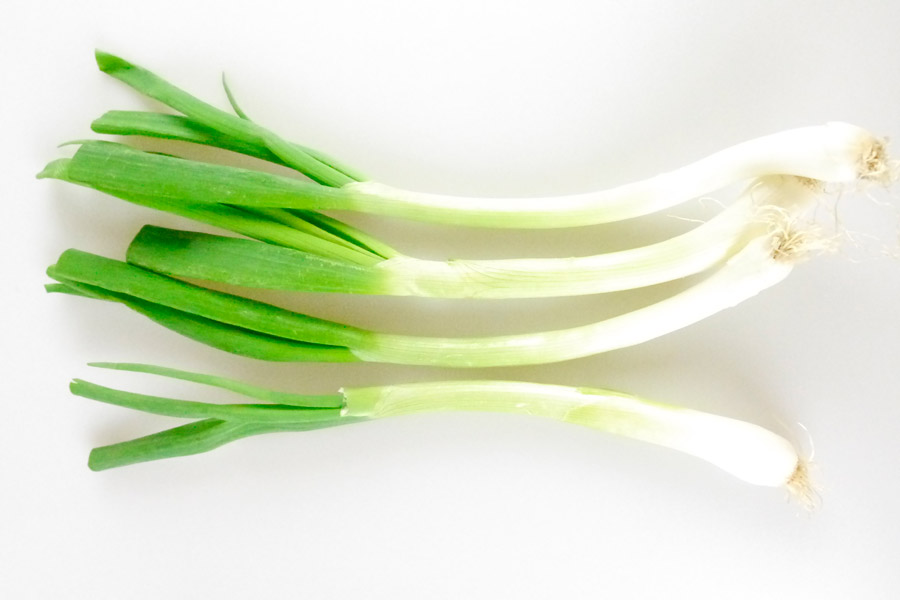Abstract
In recent years, Japan’s vegetable market has seen fluctuating trends in domestic production and imports. Domestic production remains dominant in many categories, with cabbage leading at 688kt in 2022. Onions, however, illustrate a growing reliance on imports, with a significant 2.24kt imported in 2022, although this accounts for only 1.5% of the total supply. The import proportion is relatively low, reflecting Japan’s focus on self-sufficiency for staple vegetables, while certain products, like onions, show increasing import reliance to meet demand, signaling shifts in agricultural patterns.
Domestic production of leafy vegetables
Japanese cabbage production peaked in 2006 at 1.07Mt, but current production stands at just 64% of that peak. Over the years, production has faced fluctuations due to factors such as weather, demand shifts, and farming practices. The decline in cabbage production reflects broader challenges in agriculture, including aging farmers and reduced farmland. Despite this, cabbage remains a staple crop in Japan, with domestic production still playing a significant role in meeting national demand. Future trends will likely depend on advancements in farming techniques and policies supporting agricultural sustainability.


The maximum is 1.07Mt[2006] of Cabbage, and the current value is about 64%
Import quantity of leafy vegetables
In 2022, Negi (Japanese leek) topped the vegetable import market in Japan, with a notable 31.9kt, marking the highest current import value. This trend reflects a growing reliance on imports for certain vegetables that face challenges in domestic production, such as fluctuations in supply or higher production costs. Over time, imported vegetables have filled gaps in the market, contributing to increased variety and availability. Regional differences in import volumes highlight specific demand patterns, with urban areas often seeing higher imports. The trend indicates a shift towards diversification in Japan’s vegetable sourcing.


The maximum is 31.9kt[2004] of Green onion, and the current value is about 7.04%
Import (proportion) quantity of leafy vegetables
From 2004 to 2022, the proportion of imported onions in Japan reached its peak at 11.4% in 2004. Since then, it has risen to 13.2% of its highest value, indicating a gradual increase in import reliance for this staple vegetable. This trend reflects the challenges of domestic onion production, such as weather conditions and rising costs, prompting greater dependence on imports to meet consumer demand. The shift towards imports is consistent with broader trends in Japan’s agricultural market, where imports help stabilize supply despite challenges in local production.


The maximum is 11.4%[2004] of Green onion, and the current value is about 13.2%



Comments